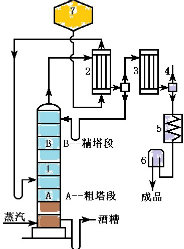Q
Why is the resale value of Lexus so high?
Lexus holds its value so well in Malaysia's used car market, and there's a good reason for that. It all starts with the brand's stellar reputation, rock-solid reliability, and surprisingly reasonable repair costs. As Toyota's premium arm, Lexus carries over that legendary Japanese durability and hassle-free ownership experience we all know. Even after years of use, these cars still keep their mechanical integrity and interior quality intact – that's why they're such hot property second-hand.
On top of that, Lexus offers some pretty generous warranty coverage and top-notch after-sales service here in Malaysia. That takes a lot of the sting out of long-term ownership costs and really gives buyers peace of mind. Then there's the design language – Lexus tends to go for that timeless, understated elegance that doesn't feel dated after a few years. That means even older models still have strong demand.
Let's not forget, Malaysian buyers have always had a soft spot for premium Japanese brands, and Lexus delivers exactly what local drivers want: great fuel efficiency and that plush, comfortable ride. All these factors combined keep those used Lexus prices nice and steady. If you're thinking of getting one, sticking to popular models like the ES or RX series is probably a smart move. They're well-known here, and the supply-demand balance is more stable, so you'll likely get a better return when it's time to sell.
Special Disclaimer: This content is published by users and does not represent the views or position of PCauto.
Related Q&A
Q
What is the Toyota counterpart to the Lexus UX?
Lexus, Toyota's luxury arm, positions the UX as its entry-level crossover, and its Toyota-badged counterpart is none other than the C-HR. Both ride on the versatile TNGA-C platform, sharing core powertrains and chassis tech, but they're tuned to appeal to different crowds. The UX leans hard into that Lexus luxury vibe – think plusher materials, a more exquisite cabin, and a longer list of standard driver-assistance goodies. The C-HR, on the other hand, goes for a bold, youthful design and a friendlier price tag, making it a solid pick for style-conscious buyers watching their wallets.
Over in Malaysia, both crossovers offer hybrid options, which plays right into the local demand for fuel-efficient rides. But Lexus typically sweetens the deal with more comprehensive after-sales service and warranty packages for the UX. Here's the thing though – even with the same platform, the UX gets upgraded sound deadening and suspension tuning that prioritizes a smooth, comfortable ride, perfect if you value that premium driving feel. The C-HR, by contrast, is all about nimble handling, making it a zippy companion for city streets.
These two are a great example of how Toyota Group targets different niches. At the end of the day, it all comes down to your budget and what you prioritize in a ride.
Q
When will the Lexus UX be released?
The Lexus UX has officially hit the Malaysian market, and this luxury compact SUV is turning heads with its hybrid tech and sleek design. Local Lexus dealers usually have units in stock, though exact delivery times might vary depending on trim and color choices—your best bet is to reach out to your nearest authorized Lexus dealer for the latest inventory and wait times. As the brand's entry-level SUV, the UX packs an efficient 2.0L hybrid system that really shines when it comes to fuel economy and smooth driving, making it perfect for Malaysia's urban roads. It also comes loaded with Lexus' latest safety tech, including pre-collision systems and lane-keeping assist. In Malaysia, the UX goes up against German and Japanese rivals in the same luxury segment, but its unique Japanese luxury vibe and reliable hybrid know-how have earned it plenty of fans. Lexus Malaysia backs it up with a solid after-sales network too, including a 5-year unlimited mileage warranty and a 10-year warranty for the hybrid battery, so owners can drive with peace of mind.
Q
What is the difference between Lexus UX NX and RX?
The Lexus UX, NX, and RX are the three main SUV models that Toyota's luxury brand Lexus is pushing in the Malaysian market, with the key differences lying in their positioning, size, and powertrain options. The UX is the compact one – the smallest in the lineup – perfect for zipping around the city. It comes in the UX 200 with a naturally aspirated engine and the UX 250h hybrid, targeting younger buyers and those who value fuel efficiency.
Moving up, the NX slots in as the mid-size SUV, sitting between the UX and RX in terms of dimensions. It offers the NX 250, NX 350h hybrid, and the NX 450h+ plug-in hybrid. The NX prioritizes practical space and a more loaded tech suite.
Then there's the RX, the flagship midsize-to-large SUV with the most commanding presence. It's available as the RX 350, RX 350h hybrid, and the sporty RX 500h performance hybrid. The RX really leans into luxury and ride comfort, making it a solid pick for families.
All three sport Lexus' latest family design language, but the RX takes the cake when it comes to interior materials and sound insulation. Malaysian buyers can pick based on their needs: the UX for singles or small families, the NX for a balance of space and versatility, and the RX for that extra roomy, premium experience.
Lexus has a strong after-sales network in Malaysia too. All models come with a 5-year unlimited mileage warranty, and hybrid models get an even better 10-year warranty on the battery, giving customers plenty of peace of mind.
Q
Where is Lexus UX made?
The Lexus UX is a globally sold luxury compact SUV, primarily built at the brand's Kyushu factory in Japan – a facility renowned for its precision manufacturing and strict quality control, ensuring every vehicle meets Lexus's global standards. For the Malaysian market, the UX comes in through official import channels, fully compliant with local regulations and tailored to meet consumer needs here. Under the hood, it packs Lexus's advanced hybrid tech, delivering impressive fuel efficiency without skimping on performance. Step inside, and you're greeted with premium materials, where attention to detail and comfort take center stage – perfect for both zipping around the city and longer road trips. In Malaysia, Lexus has built a strong reputation, backed by a solid after-sales service network that offers comprehensive support, including warranties and regular maintenance, so owners can enjoy peace of mind. Plus, the UX's compact size and nimble handling make it a great fit for Malaysia's urban roads, striking a nice balance between luxury feel and everyday practicality in an SUV package.
Q
Which is bigger? Lexus UX or NX?
In the Malaysian market, both the Lexus UX and NX are popular luxury SUV choices, but the NX is noticeably larger, slotting into the midsize SUV category compared to the UX's compact SUV positioning. The NX stretches longer, wider, and rides on a longer wheelbase than the UX, translating to significantly more interior room. Rear passengers will appreciate the extra legroom, and there's a clear advantage in boot space too – definitely the pick if you need to haul more gear or regularly ferry the family around. The UX, though, is the urban dweller's friend; its smaller footprint makes zipping through tight city streets and squeezing into parking spots a whole lot easier.
Both models come loaded with Lexus's trademark high-quality interiors and cutting-edge tech features. The NX ups the practicality ante further by offering a third-row seating option (depending on the specific variant). Under the hood, the NX typically gets more potent engine choices, including hybrid powertrains, while the UX prioritizes fuel efficiency. So, it really boils down to your space requirements and driving style when choosing between the two. And to top it off, Lexus has a solid after-sales service network in Malaysia, giving owners that added peace of mind.
Q
How much is Lexus UX?
The Lexus UX carries varying price tags in Malaysia depending on the trim and specs, generally ranging from RM243,888 to RM289,888. Keep in mind, though, that these figures can shift a bit with dealer promotions or if you opt for extra features. As a luxury compact SUV, the UX gives you two powertrain choices: the UX 200 with a 2.0-liter naturally aspirated engine, and the UX 250h hybrid which puts a bigger focus on fuel efficiency and eco-friendliness.
It's no wonder this model is a hit in Malaysia. The interior is nicely put together, it's packed with tech goodies, and let's not forget Lexus's solid reputation for reliability—all big draws for buyers here. For Malaysian drivers, the UX isn't just for city zipping; its slightly higher ride handles our mixed road conditions pretty well too.
Worth mentioning: Lexus backs it with a 4-year or 100,000 km warranty, plus free scheduled servicing. That sweetens the deal even more. If you're eyeing a luxury compact SUV, the UX is definitely in the mix, but it's smart to cross-shop with other brands in its class. Most importantly, take 'em for a spin yourself to get a real feel for how they drive and what they offer.
Q
How big is the Lexus UX?
The Lexus UX is a compact luxury SUV, measuring 4,495mm in length, 1,840mm in width, and 1,520mm in height, with a wheelbase of 2,640mm. These dimensions make it super maneuverable for Malaysian city driving – perfect for squeezing through tight backroads and navigating those cramped parking lots – while still offering enough interior space for your daily grind.
Design-wise, the UX leans into sportiness and modern style, rocking Lexus' signature spindle grille and those sharp, angular lines we know from the family. Inside, it's all about that premium feel mixed with tech, packing in a solid suite of smart driver-assist features and user-friendly infotainment.
Under the hood, you've got options: petrol or hybrid. The UX 250h, in particular, pairs a 2.0-liter four-cylinder engine with an electric motor, striking a nice balance between fuel efficiency and peppy performance – right up Malaysia's alley for folks wanting both savings at the pump and a bit of zip.
Plus, the UX sits higher off the ground, so it can handle Malaysia's mixed bag of road conditions, from smooth highways to the occasional rough patch. And let's not forget Lexus' solid after-sales network here – it gives owners peace of mind knowing support is reliable.
All in all, the UX is a strong contender in the compact SUV segment. It's ideal for young families or urban professionals who want that luxury touch without skimping on practicality.
Q
Is Lexus better than Porsche?
Lexus and Porsche are both globally renowned luxury car brands, but their product positioning and driving experiences set them apart. So, it's tough to simply say which is "better"—it really boils down to what the customer is looking for. Lexus built its reputation on top-notch reliability, super comfortable rides, and meticulous craftsmanship. That makes it a solid pick for Malaysian drivers who value day-to-day practicality and long-term durability, especially since their hybrid models are absolute stars when it comes to fuel efficiency.
Porsche, on the other hand, is all about that legendary sports performance and driving thrills. Whether it's their iconic sports cars or their SUVs, they really shine when it comes to handling and raw power—perfect for folks who live for that adrenaline rush behind the wheel. Plus, Porsche's got serious pedigree in track tech and high-performance machines; the 911, for instance, has long been the benchmark in the sports car world.
In the Malaysian market, both brands have pretty well-established after-sales service networks. But generally, Lexus tends to offer more generous warranty packages, while Porsche gives you way more options to personalize your ride. So, if comfort and keeping maintenance costs low are your top priorities, Lexus might just be your best bet. But if you're chasing driving excitement and that rich brand heritage, Porsche is probably more your speed.
My advice? Any potential buyer should definitely take both for a spin themselves, considering their own driving needs and budget. At the end of the day, how a car feels to drive is totally subjective.
Q
Should I buy BMW or Lexus?
Choosing between a BMW and a Lexus in Malaysia really comes down to your personal needs and what you value most in a car. BMWs are all about that driving thrill—sharp handling, punchy performance—perfect if you’re someone who loves a sporty ride. Models like the 3 Series or 5 Series are pretty common on local roads, so their service network is solid, though you’ll pay a bit more for maintenance.
Lexus, on the other hand, nails luxury comfort and reliability. Their hybrid tech is top-notch, which means great fuel economy—ideal if you prioritize a quiet cabin and long-term durability. Plus, Lexus offers a longer warranty here in Malaysia, so you won’t stress as much about future repairs.
Thinking about Malaysia’s hot, rainy weather? Both brands have tweaked their cars to handle the heat and humidity, but the Lexus hybrids really shine in stop-and-go traffic, saving you more at the pump.
So, if your budget allows and you crave that dynamic driving feel, go BMW. If you want something hassle-free and comfy for the long haul, Lexus is the way to go. Either way, test-driving both is a must before you decide.
Q
Which country purchases the most Lexus?
Looking at recent sales figures, the U.S. remains Lexus' biggest global market by a significant margin, consistently leading the pack year after year. A big part of that success? The brand's strong SUV lineup – think RX and NX – and the widespread popularity of its hybrid technology. Let's not forget American consumers' enduring love for luxury badges, which certainly doesn't hurt.
China isn't far behind. Lexus has carved out a solid niche there thanks to its stubborn commitment to keeping models imported and its rock-solid reputation for quality. It's especially big in southern China. Over in Southeast Asia, Thailand takes the regional crown, and that's largely down to local production giving it a leg up on pricing and tariffs.
In Malaysia, Lexus leans more into the "niche luxury" category, but it still draws in a dedicated crowd. What's the appeal? Reliable hybrid systems and, compared to those German rivals, generally lower maintenance costs – a big plus for buyers who value long-term ownership and practicality.
Interestingly, Lexus' global bestsellers, the RX and ES, both come in right-hand drive, which obviously suits Malaysia's roads. And with newer, smaller SUVs like the UX, the brand is clearly aiming to hook a younger audience. It'll be interesting to see how Lexus tweaks its Southeast Asia strategy moving forward.
If you're a Malaysian considering a Lexus, keep an eye on that 5-year free maintenance package – that's a pretty competitive after-sales perk in the luxury car space.
Latest Q&A
Q
Is there a recall on 2019 Kia Optima engines?
Regarding the engine recall issue for the 2019 Kia Optima, there's currently no official recall announcement specifically targeting the Malaysian market. However, looking at international records, certain overseas markets did see recalls for the 2019 Optima due to potential engine faults – think issues like bearing wear in Theta II GDI engines, which could potentially lead to stalling or even fire risks. If you're a Malaysian Optima owner, I’d strongly suggest heading to Kia Malaysia’s official website, finding their recall check page, and plugging in your Vehicle Identification Number (VIN) to see if your ride is affected. Or, just swing by your nearest authorized service center for a free inspection – better safe than sorry.
It’s worth noting that Hyundai Motor Group implemented an extended warranty policy worldwide for Theta II engine concerns. For some models, the warranty coverage for engine-related components can be extended up to 15 years or 200,000 kilometers, whichever comes first. That’s a solid demonstration of the brand taking responsibility for its customers.
For Malaysian owners, a proactive step during regular maintenance is to specifically request a check on the engine's condition – keeping an eye on oil loss and any unusual noises is key for preventing potential problems. Also, it’s a good idea to stay updated on any service campaigns announced by local Kia dealers. Sometimes, these campaigns might offer free inspections or repairs for issues that aren’t officially classified as recalls but are still worth addressing.
If your vehicle starts showing symptoms like warning lights flashing, a noticeable drop in power, or excessive oil consumption, don’t delay – contact after-sales service immediately. Catching and addressing issues early can significantly reduce the cost of repairs down the line.
Q
How long will a 2019 Kia last?
The lifespan of a 2019 Kia largely depends on how well you maintain it, your driving habits, and Malaysia's road conditions. If you stick to the manufacturer's recommended maintenance schedule—like changing the oil every 6 months or 10,000 km and checking key components—drive sensibly, and avoid prolonged rough roads, these models typically clock 200,000 to 300,000 km or last over 10 years. Malaysia's hot and humid climate takes a toll on rubber parts (belts, bushings) and batteries, so it's smart to shorten inspection intervals for these and regularly clean the AC system to prevent mold growth. Hyundai-Kia's Theta II and Nu engines are pretty solid tech-wise, and paired with the 6AT transmission, the powertrain reliability holds up well against competitors—just don't skip that transmission fluid change.
Notably, Malaysia's COE system pushes some owners to prioritize long-term care, so I'd recommend using SP/GF-6A spec oil at authorized dealers or certified workshops. On the used market, 2019 Kias with full service records still hold decent resale value. If you're planning to keep it for the long haul, extended warranty might be worth considering. Durability varies a bit between models like the Cerato and Sportage due to their different purposes—SUVs like the Sportage might need more frequent suspension checks.
Q
Are Kia Optimas cheap to fix?
When it comes to the maintenance costs of the Kia Optima in Malaysia, this sedan falls right in the middle of the pack for midsize cars. Parts and labor are definitely easier on the wallet compared to luxury brands, though you might pay a bit more than some heavily localized Japanese models. The Optima's 2.0L and 2.4L naturally aspirated engines are pretty tried-and-true tech – basic services like an oil change with filters will set you back around RM300 to RM500, which lines up with what you'd pay for other cars in its class. Just a heads-up though: if you're looking at the 1.6T turbocharged version, expect those service bills to creep up a notch.
Kia's authorized service center network covers most major cities in Malaysia, so getting your hands on genuine parts is usually straightforward. That said, some non-critical components might need to be ordered in, so it's smart to stick to regular maintenance schedules to avoid bigger repair headaches down the line. If you're in the market for a used Optima, prioritize ones with a complete service history – and maybe look into third-party warranty plans to help cover any unexpected major repairs. All in all, the Optima is more budget-friendly to maintain than its European rivals, but you'll still need to set aside more than you would for a basic econobox. Choosing official or certified repair channels can really help keep those costs in check.
Q
What kind of engine is in the 2019 Kia Optima?
The 2019 Kia Optima hits Malaysian roads with two petrol engine choices: a 2.0-litre naturally aspirated Theta II MPI and a 1.6-litre turbocharged Gamma T-GDI. The 2.0L puts out 152 hp and 192 Nm of torque, perfect for folks who prioritize a smooth, laid-back drive. On the flip side, the 1.6T cranks things up with a meatier 180 hp and 265 Nm, catering to drivers who crave that extra zip when they hit the throttle. Both engines are mated to a 6-speed automatic gearbox, striking a decent balance between fuel efficiency and everyday comfort.
What’s neat about the Optima’s engines is the tech packed in—think direct injection and turbocharging (for the 1.6). These aren’t just buzzwords; they actually help boost power while keeping fuel consumption in check. For Malaysian drivers, both engines should handle our local climate and road conditions like a champ. Kia’s engines have also proven their durability over time, and maintenance costs won’t break the bank. If you’re really hungry for more power, there’s the Optima GT with a 2.0-litre turbo, but keep in mind that trim’s a bit of a rare find in Malaysia.
Q
What is a good year for Kia Optima?
If you're in the Malaysian market for a Kia Optima, the 2016 to 2018 model years come highly recommended. These iterations strike a solid balance between reliability, features, and driving dynamics. The 2016 facelift, in particular, brought a more stylish exterior, a nicer interior feel, and stepped-up safety kit like blind-spot detection and lane-keeping assist. Then, the 2017 and 2018 models refined the powertrain further, delivering an even smoother ride.
On top of that, used Optimas in Malaysia are pretty reasonably priced, and maintenance costs won't break the bank either. They're a solid pick if you're on a budget but still want the comfort of a midsize sedan. A quick heads-up though: when shopping used, always prioritize ones with complete service records. It's also smart to get a proper inspection through official channels to make sure the car's in good shape. Malaysia's hot and humid weather can be tough on a car's electronics and rubber parts, so keeping an eye on the cooling system and seals will definitely help keep it running longer.
View MoreRelated News

Lexus LS may turn into a six-wheel MPV, so why does the LS Concept use a six-wheel design?
MichaelOct 16, 2025

Lexus launches LS 500 Heritage Edition in the United States, which may be discontinued afterwards
Kevin WongSep 28, 2025

The 2026 Lexus IS has made its global debut, and after a redesign, its appearance more closely resembles that of a Toyota
RobertSep 11, 2025

Lexus Drops Full EV Plan, Will Push Hybrids and EVs Together
RobertAug 11, 2025

Lexus IS will undergo a major redesign, and more Lexus models may disappear in the future
Kevin WongAug 4, 2025
View More













 Cars
Cars




Pros
Cons